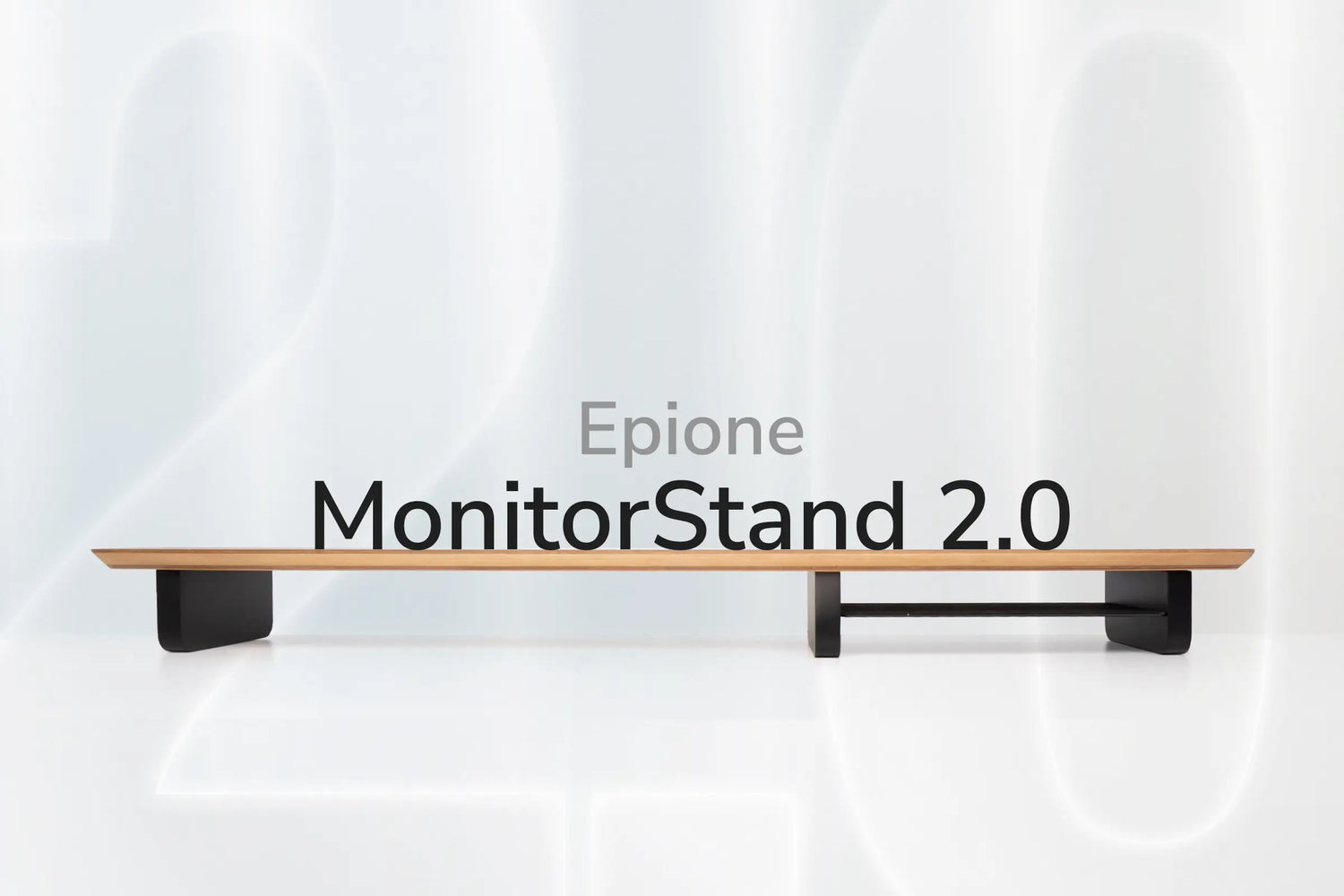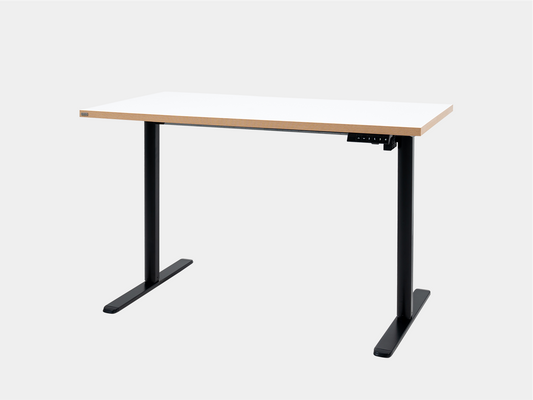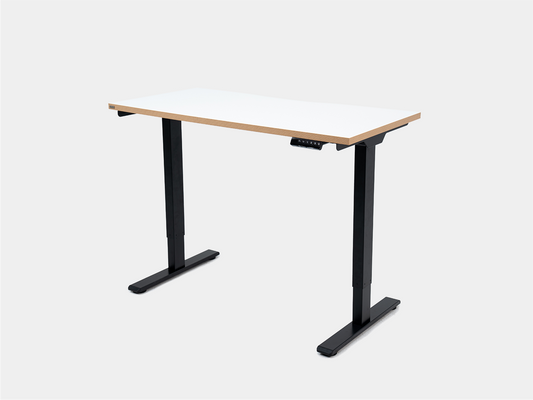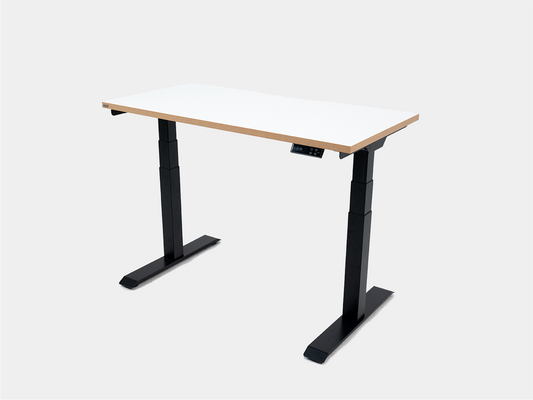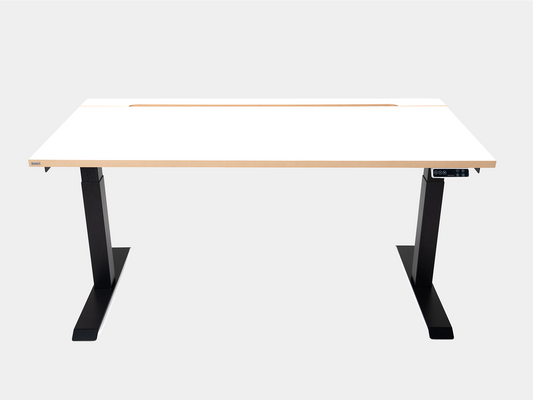If you have ever researched and bought furniture such as study tables, dining tables, shelves, wardrobes, wooden kitchen cabinets, you will see that there are two types of wood commonly chosen as the main components: MFC and MDF. To answer the question of why they are so popular, as well as understand the difference between the two and which one to choose, let's learn more with Epione in this article!

Overview of MFC and MDF wood
MFC stands for Melamine Faced Chipboard, also known as conti-board or melamine chipboard. As the name suggests, MFC is a combination of chipboard and melamine coating. Chipboard is an industrial wood product made from wood chips and plastic. Wood chips come from fast-growing forest trees such as eucalyptus, acacia and rubber.
Melamine is a thermosetting plastic that is used as a coating (it can be printed with patterns to look like wood). These coatings will create a surface that looks like many natural trees such as oak, rosewood, acacia, ironwood, dổi, etc. These melamine coatings are then bonded to the particle board to become the finished product. The addition of melamine makes the wood surface scratch resistant and seemingly waterproof.
MFC cannot be made into seamless surfaces, its thickness is limited and its water resistance is not high. Therefore, it is most suitable for furniture in dry environments and is often used for furniture such as desks, wardrobes and bedside cabinets for home or office or for furniture designs in straight and flat blocks.
Meanwhile, MDF with the full name Medium Density Fiberboard, also known as medium density fiberboard - is an industrial wood board produced on a modern production line from scraps and branches of many types of real wood such as oak, agarwood, etc. and bonded with heat, glue and pressed together with high pressure.
MDF has a higher density than MFC and has a smooth surface that is perfect for painting, gluing and screwing. It is also commonly used for interior design in offices and buildings and interior designs with complex shapes.
Difference between MDF and MFC
1. Classification
1.1. MDF wood

3 popular MDF cores
There are 5 types of MDF wood, including: indoor MDF, water-resistant MDF, smooth MDF, rough MDF and melamine-coated MDF.
MDF boards have an average density of 600 to 800kg/m3. Manufacturers often mix some colors in the core to distinguish the following popular types of MDF:
- Regular MDF core: Has the natural color of wood powder (light brown), smooth and even surface, wood fibers are bonded with UF - urea formaldehyde glue.
- Moisture-resistant MDF core: Green in color, water-resistant thanks to high-quality adhesives (MUF - Melamine Urea Formaldehyde glue, PF - Phenol Formaldehyde glue). It is often used in high humidity spaces such as bathrooms or kitchens.
- Fireproof MDF core: Red in color, fireproof thanks to the fireproof glue layer or other materials such as plaster, cement, etc. The board helps minimize damage in case of fire or explosion because the ignition time is very long and produces very little smoke. Therefore, it is ideal for places such as hospitals, schools and public buildings.
In addition to the popular types mentioned above, MDF also has a variety of other types such as MDF Ultra Lite, MDF without added Formaldehyde or colored MDF for designers, architects and carpenters to add personality to the products.
1.2. MFC wood

2 types of MFC wood
Unlike the diversity of MDF, MFC only has 2 types: regular MFC wood and moisture-resistant MFC wood.
MFC wood usually has about 80 colors from black, white to wood grain colors such as oak, ash, maple, beech, acacia, teak, walnut, camphor, cherry, yellow burl, red burl, antique ash, rosewood, ebony,... or modern wood grain colors.
For office furniture and home furniture, regular MFC is suitable. But for more humid areas such as toilets, kitchen cabinets, laboratories, hospitals or in the North, where the climate is humid, moisture-resistant MFC will be the best choice.
Similar to regular MFC, moisture-proof MFC also has about 80 colors. Moisture-proof MFC wood with green core V313 will have a color quite similar to regular MFC. So to distinguish between regular and moisture-proof types, you can notice that moisture-proof MFC is usually about 40 to 60kg/m³ heavier than regular MFC, they have a green core and the total weight falls between 740 and 760 kg/m³.
2. How to distinguish MFC and MDF
MFC and MDF wood look very similar after being painted or covered with a surface, but if you look closely at the core, you can easily distinguish them.
MFC wood is made from wood chips bonded together with glue and some hardeners, so the core board looks rough. The thickness is usually around 18mm-25mm. MDF wood is made from wood fiber/wood powder, so the core on the cut surface will look smoother. Its thickness will also be thinner, including sizes of 5.5mm, 6mm, 9mm, 12mm, 15mm and 17mm.
3. Production process
| Step 1: Use a chipper to cut the wood into small pieces, creating wood chips. Step 2: Dry the wood chips at the specified temperature to remove moisture. Step 3: Sort and screen them according to size and quality Step 4: Mix the wood chips with the adhesives Step 5: Shape the particle board according to the parameters of wood thickness and density Step 6: Preliminary pressing after shaping Step 7: Cut them into standard length panels Step 8: Press the particle board under high pressure and temperature to form MFC board Step 9: Trim edges and remove edge defects Step 10: Smooth the surface of the MFC board Step 11: Check and evaluate the quality of MFC wood panels |
After being harvested and brought to the factory, wood chips and branches will be put into equipment to be crushed into wood powder and put into MDF wood production according to the following 2 methods: Dry method: Step 1: After being ground, the wood powder is mixed with additives and glue in a mixer-dryer to produce fiber powder. Step 2: The fiber powder is spread out by a spreader, raked into 2-3 layers depending on the size of the produced plywood. Step 3: These layers are then transferred to the heating press and pressed twice: - 1st time: Preliminary pressing for the upper layer, 2nd layer, 3rd layer - 2nd time: Press all 3 layers together tightly Step 4: After pressing, the boards are exported, trimmed, sanded, graded and packaged. Wet method: Step 1: Wood powder is sprayed with water to wet it and form flakes (Mat Formation). Step 2: The wood chips are scraped and spread onto the pressing tray, preheated once to create the initial thickness (Preliminary board). Step 3: The raw board is rolled with heat to compress both sides and drain the water (similar to the paper making process). Step 4: Cutting the board and edge banding - The board after being made into long lines will be cut into different sizes. Step 5: Cold treatment, sanding, sorting and packaging The dry method is simpler and more compact, and yields high and uniform fiber ratios. Therefore, it is commonly used in today's manufacturing plants. |
4. Durability and longevity
MFC boards are moisture resistant, reducing the risk of warping and blistering. They are also resistant to scratches, stains and impacts. The durability and longevity of MFC boards make them a great choice for kitchens, bathrooms and other areas with high humidity and heavy foot traffic.
In Vietnam today, office furniture, cabinets and shelves using MFC wood that meet E1 standards are very rare. However, Epione's office desks can meet this standard at an affordable price. For only about 1,000,000 VND, you can own a user-friendly desk that protects your health in the long term.

Epione LinkDesk meets E1 standards for user safety.
MDF, on the other hand, can be easily damaged. If you try to sand it, you will reach the core of the fiber and thus ruin the overall integrity of the board. Unlike solid wood, where a little sanding can hide dents and scratches, damage to MDF is permanent.
In addition, MDF is susceptible to high temperatures. Because it is made from compounds such as wax or resin, you should protect MDF products away from heaters, radiators, fireplaces, ovens, and stoves, especially during hot summer weather.
5. Safety and environmental friendliness
MFC is an environmentally friendly choice because it is made from sustainable materials. The production process of MFC creates less waste than other materials and it also does not contain toxic chemicals, making it safe to use in homes and commercial buildings. In addition, 1220x2440mm melamine chipboard is also recyclable, reducing waste and promoting sustainability, reducing negative impacts on the environment.
Meanwhile, MDF wood is produced by mixing wood fibers with adhesives and some other ingredients, including formaldehyde . If the concentration of formaldehyde in the air is too high, it can affect human health, such as causing eye irritation, sore throat, difficulty breathing, etc. Therefore, the use of MDF must be done in well-ventilated conditions and ensure safety for human health.

Illustration of Formaldehyde emission concentration
Due to its superior safety, MFC wood has been chosen by many people for their dining tables, chairs, bookshelves, or wardrobes. Kitchen cabinets made from this type of wood also help you not to worry much about termites or difficulty in cleaning.
6. Price
Currently, MFC wood panels are quite cheap compared to solid wood panels, plywood and MDF panels, making them the top choice for builders and designers. However, depending on the surface, its price will change. If you use Melamine surface, you can save more money than other high-end surfaces such as Acrylic or Catania Laminates. The price can vary from a few tens to a few hundred thousand depending on the chosen design.
Should I choose MFC or MDF wood?

Should I choose MFC or MDF wood?
To help you systematize all the available information and easily choose the right wood material, I will summarize the main ideas you need to know about the advantages and disadvantages of each type of wood in the table below.
| Wood type | ||
|---|---|---|
| Advantage | - MFC wood has stable durability and high load-bearing capacity. - MFC wood has many rich and diverse colors such as melamine-coated solid color, imitation wood, imitation stone. - The wooden surface has a melamine coating to help protect the board to stay durable, scratch-resistant, fire-resistant and moisture-resistant. - Smooth, flat and waterproof surface, easy to clean. - Anti-warping, peeling, termites or cracking - Cheaper price than MDF Veneer. - Has soundproofing and heat insulation capabilities - Fast processing time, suitable for projects that need to be completed in a short time. - MFC wood is mainly produced from short-term trees, easy to grow and regenerate in a short time, contributing greatly to forest protection. |
- Smooth and flat wooden surface. - Easy to shape sophisticated, highly complex products - Good paint adhesion, can be painted in many colors to increase aesthetics. - Flat, smooth surface can be painted or laminated with Melamine or Laminate. - Does not warp, rot or crack like natural wood - Cheaper price than natural wood. - Good sound and heat insulation - Fast processing time, suitable for projects that need to be completed in a short time. |
| Disadvantages | - MFC board is solid but the wood density is not as high as MDF so the sound insulation effect will not be as good as MDF. - This wood panel has a moisture-proof coating but the wood core inside is hydrophobic. When exposed to water, the surface of the wood panel will easily swell and the core will pop. - Because it is made from large wood chips, when processed, particle board is easily chipped, affecting the aesthetic factor. - Because wood chips are mixed with adhesives and some other ingredients including Formaldehyde, the board can emit this substance into the air, at high concentrations it can affect health. |
- Poor vertical load resistance - MDF is heavy, which can make installation difficult. - MDF is susceptible to excessive heat because it is made from compounds such as wax or resin. - Because wood fibers are mixed with adhesives and some other ingredients including Formaldehyde, the board can emit this substance into the air, at high concentrations it can affect health. |
Through this article, Epione hopes you have gained more useful knowledge about MFC and MDF wood, understand their applications and differences to become a smart buyer for yourself and your family!
